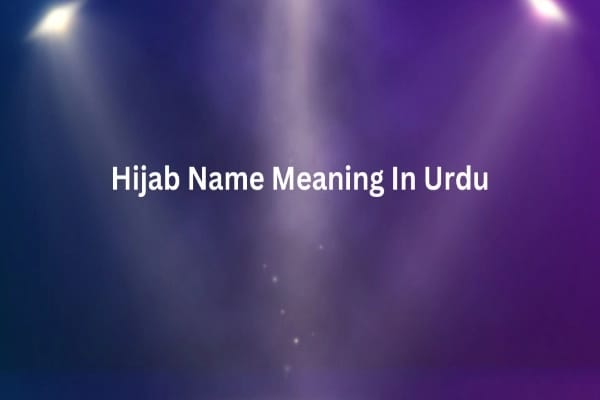Table of Contents
ToggleHijab Name Meaning In Urdu
“حجاب” کا لفظ ایک دولت مند معانی کا جال ہے، جو سماجی، مذہبی، اور ثقافتی سیاق و سباق میں پیچیدگی سے بھرا ہوا ہے۔ حجاب صرف ایک لباس کا حامل نہیں ہوتا، بلکہ یہ ایک قوی پہچان، طاقت، اور اسلامی اقدار کا نمائندہ ہے۔ حجاب کے ارد گرد مختلف معانیوں کو سمجھنے سے، ہم ہزاروں افراد کی زندگیوں کی شکل دینے والی مختلف نظریات میں داخلہ حاصل کرتے ہیں جو اس عمل کو اپنے روحانی انجام اور ثقافتی اظہار کا ایک لازمی حصہ قرار دیتے ہیں۔”
| Aspect | Meaning in Urdu |
|---|---|
| Etymology | حجاب (Hijab), derived from ح-ج-ب, meaning to cover or veil. |
| Cultural Significance | Symbol of modesty and dignity, representing commitment to faith and traditional values. |
| Religious Roots | Deeply rooted in Islamic teachings, emphasizing modesty in behavior, speech, and attire. Synonymous with “pardah” (پردہ). |
| Social Empowerment | Empowering women by challenging societal beauty standards, allowing self-expression beyond physical appearance. |
| Breaking Stereotypes | Defying stereotypes, women in Hijab excel in various fields, challenging misconceptions about Muslim women. |
Hijab Name Meaning In English
Introduction

The Hijab, a term widely recognized in the Islamic world, holds deep cultural and religious significance. In Urdu, the word “Hijab” (حجاب) is derived from the Arabic root “ح-ج-ب,” which means to cover or to veil. The Urdu language, known for its poetic beauty, enriches the meaning of Hijab, unraveling layers of cultural, spiritual, and social connotations.
Cultural Significance
In Urdu-speaking communities, the Hijab is more than just a piece of cloth; it is a symbol of modesty and dignity. The cultural significance of the Hijab lies in its ability to transcend fashion trends, serving as a timeless expression of identity. For many Urdu-speaking individuals, the Hijab is not merely a garment but a representation of their commitment to faith and adherence to traditional values.
Religious Roots
The term “Hijab” is deeply rooted in Islamic teachings, emphasizing the concept of modesty and humility. In the context of Islam, Hijab extends beyond the physical act of covering one’s head; it encompasses a holistic approach to modesty in behavior, speech, and attire. The Quran, the holy book of Islam, encourages both men and women to adopt a modest lifestyle, with specific guidelines for the attire of Muslim women.
In Urdu, the term Hijab is synonymous with the concept of “pardah” (پردہ), which means covering or veiling. This spiritual practice is viewed as a means of maintaining purity, fostering self-respect, and adhering to the principles of Islam.
Social Empowerment
Contrary to misconceptions, wearing the Hijab is not a symbol of oppression; instead, many Urdu-speaking women view it as a source of empowerment. By choosing to wear the Hijab, women assert control over their bodies and challenge societal expectations regarding beauty standards. The Hijab, in Urdu culture, becomes a tool for self-expression, allowing women to showcase their personality, intelligence, and character rather than their physical appearance.
Breaking Stereotypes
In Urdu-speaking societies, the Hijab is breaking stereotypes and challenging preconceived notions about Muslim women. Women who choose to wear the Hijab are increasingly visible in various fields, including education, business, and the arts, debunking the myth that the Hijab is a barrier to success.
Conclusion

In Urdu, the word “Hijab” carries a rich tapestry of meanings, woven into the fabric of cultural, religious, and social contexts. Beyond being a mere piece of clothing, the Hijab is a powerful symbol of identity, empowerment, and adherence to Islamic values. By understanding the multifaceted meaning of the Hijab in Urdu, we gain insight into the diverse perspectives that shape the lives of countless individuals who choose to embrace this practice as a vital part of their journey towards spiritual fulfillment and cultural expression.

